Backed by experience and a long heritage, over 1,350 twin engine H135s have been delivered and are in service in more than 60 countries. With more than 300 operators, these versatile aircraft have flown 5 million hours.
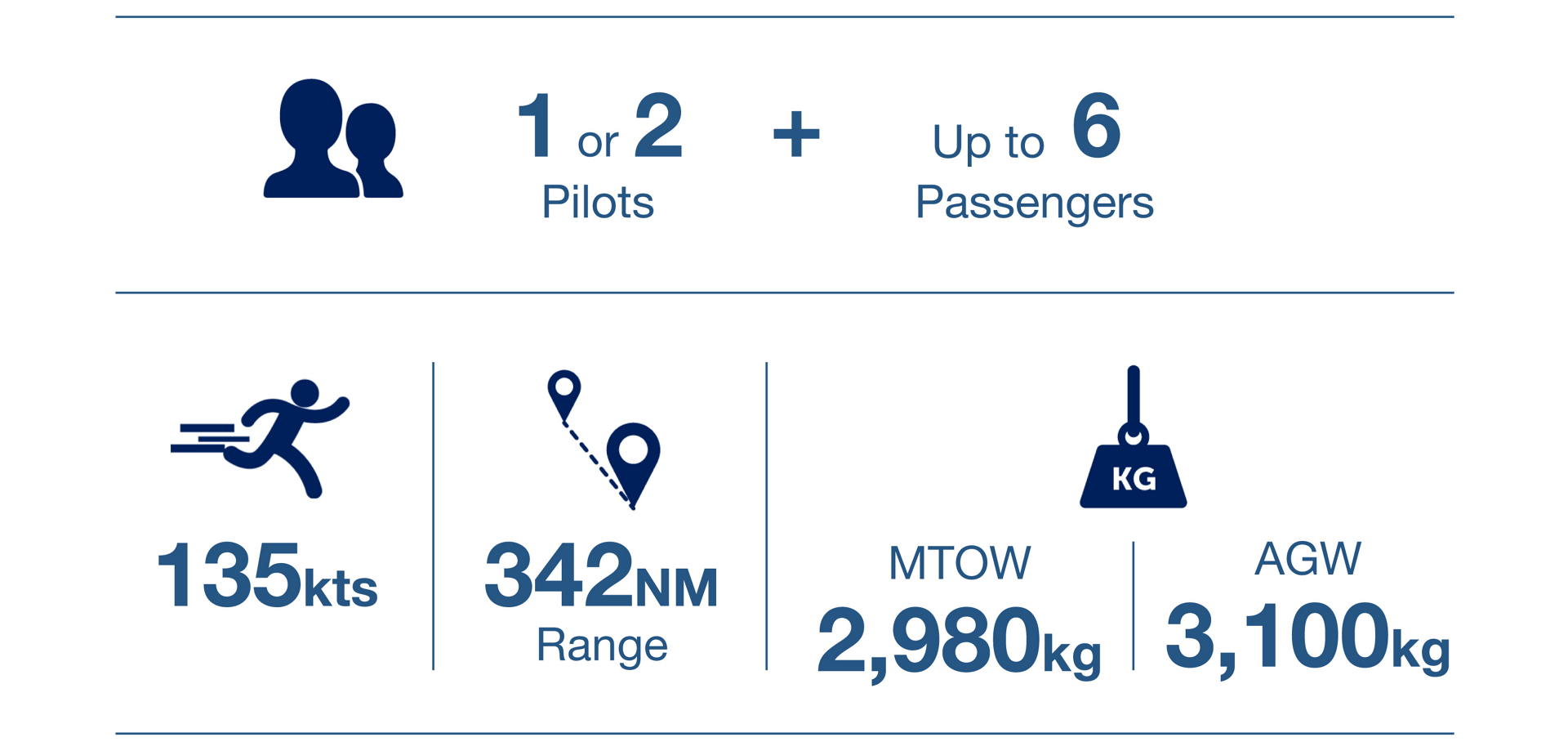
The story goes on – alternate gross weight (AGW) enhances mission capability
The new AGW was certified in 2020 by the European Union Aviation Safety Agency (EASA) and allows for an increased maximum take-off weight of up to 120kg (265 lb). As a result of this evolution, operators will be able to fly with an additional passenger, carry more equipment, add more fuel and can fly farther – with the helicopter’s endurance extended by 40 minutes and its range by 75 NM. The new AGW is available as an option and can be applied retroactively to all H135s equipped with Helionix.
Aircraft
An outstanding performer
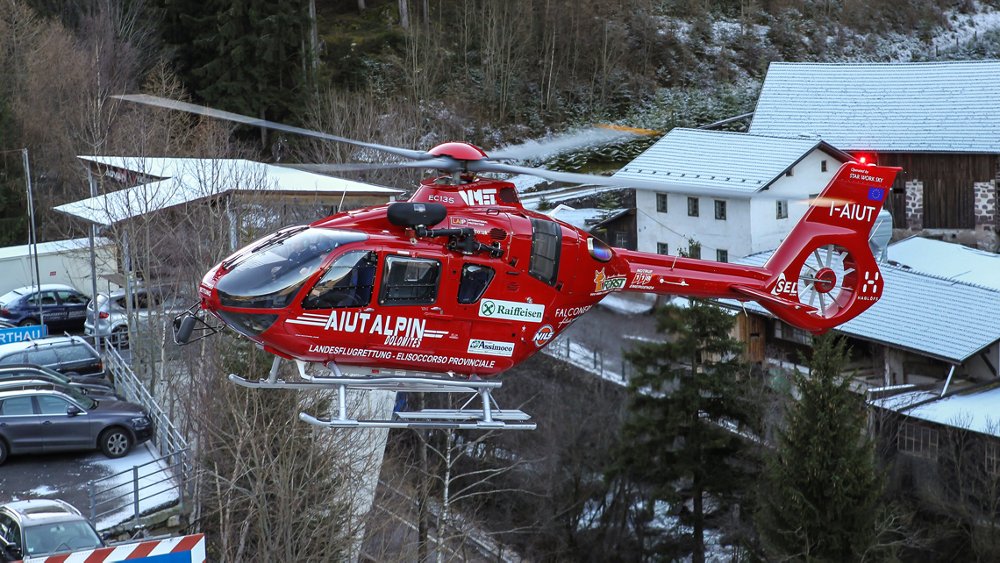
Fitted with a bearingless main rotor, Airbus’ signature Fenestron® shrouded tail rotor, engine software modifications, and a new lateral air intake, the H135 provides additional payload and delivers best-in-class performance throughout its flight envelope.
Two full authority digital engine control (FADEC)-equipped engine options are available: Safran Helicopter Engines’ Arrius 2B2plus and Pratt & Whitney Canada’s 206B3. Both of these reliable turboshaft power plants provide outstanding performance and vital power reserves – even in one engine inoperative scenarios – along with low fuel consumption.
One of Airbus’ most successful light aircraft, the H135 is known for its endurance, compact build, low sound levels, reliability, versatility and cost-competitiveness. The H135 comes with the lowest operating and maintenance costs in its class. This twin-engine helicopter can perform different missions, and can land almost anywhere, particularly in high and hot conditions, while carrying more payload over longer distances than other rotorcraft in its category.
The most safety and discretion in its class
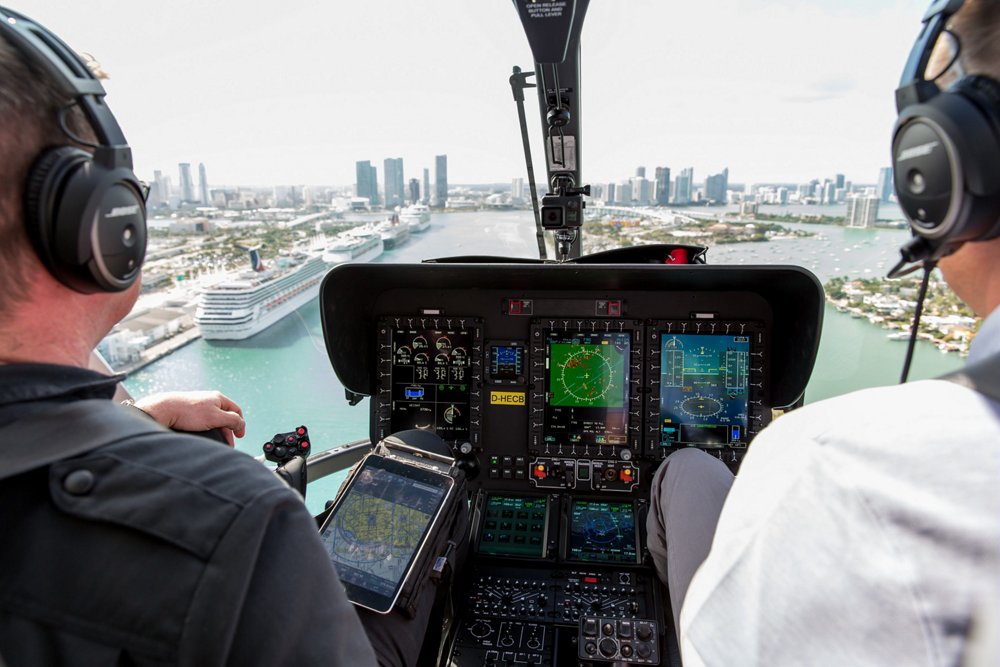
The H135’s state-of-the-art cockpit with its new 4-axis autopilot provides the highest possible safety levels. The Helionix® avionics system designed by Airbus offers operators undisputed superiority for in-flight envelope protection, pilot assistance and situational awareness – resulting in unprecedented flight safety levels. The new Helionix® is also available on the H145, H175, and H160.
Further contributing to operational safety are the rotorcraft’s high-set main rotor and the Fenestron® shrouded tail rotor. The H135’s latest performance improvement further aids flight safety, providing enhanced safety margins to the pilot and improved performance even in one engine inoperative (OEI) scenarios.
As one of the quietest helicopters in its class, the H135’s sound footprint is markedly lower than that of other helicopters in the same category. This matters most to customers who regularly operate in or over cities and in densely populated areas, such as in corporate transport, emergency medical services and law enforcement.
The H135 is allowed to fly in the United States’ Grand Canyon, which has one of the country’s most stringent noise limitations.
Ready to fly
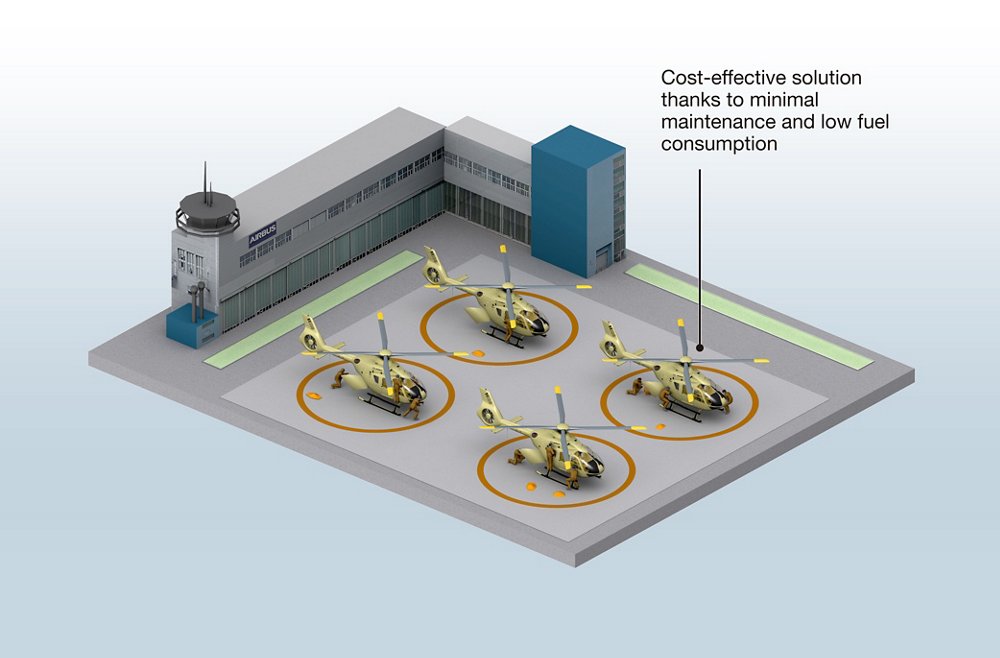
Simple design for fast and easy maintenance
The H135’s simple design makes maintenance fast and easy, ensuring reliable dispatch, less down time and lower operating costs.
The H135 is the benchmark for maintenance costs, thanks to its long inspection intervals, intermediate inspection at 500 flight hours, and periodic inspections every 1,000 hours, or three years.
With the lowest direct operating cost in its class, the H135 is one of the most attractive twin-engine helicopters to operate.
For more information on maintenance and other services, visit the HCare Services section.
The H135 accommodates a night vision imaging system (NVIS). It can be fitted with a night vision goggle (NVG)-friendly cockpit, cabin layouts and exterior lighting.
Its high level of availability and easy maintenance assists the H135 in autonomous operations such as helicopter emergency medical services (HEMS), where a technician may not be stationed nearby or on base.
Missions
Emergency medical services
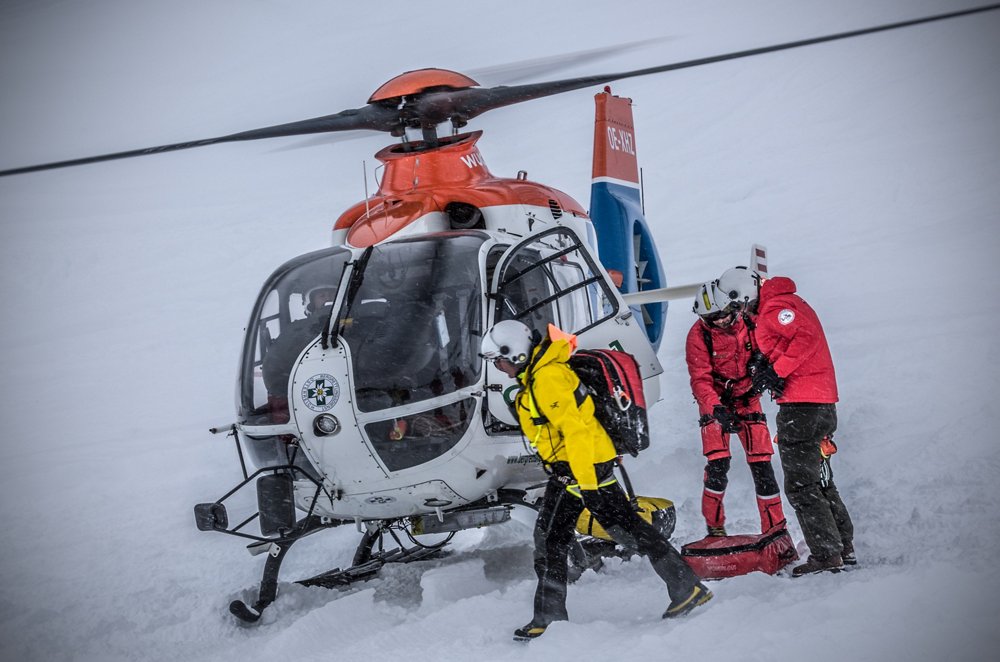
The H135 is the market leader in emergency medical services (EMS), and is available in a wide range of dedicated EMS interiors that provide operators with a choice of configurations, providing ample room for patient care. Its cabin volume allows for direct access to the patient in the event of emergencies, such as the need to administer cardio-pulmonary resuscitation. Furthermore, the aircraft and its EMS cabin layouts meet the highest standards in patient care, like those required by the European EN13718.
Search and rescue
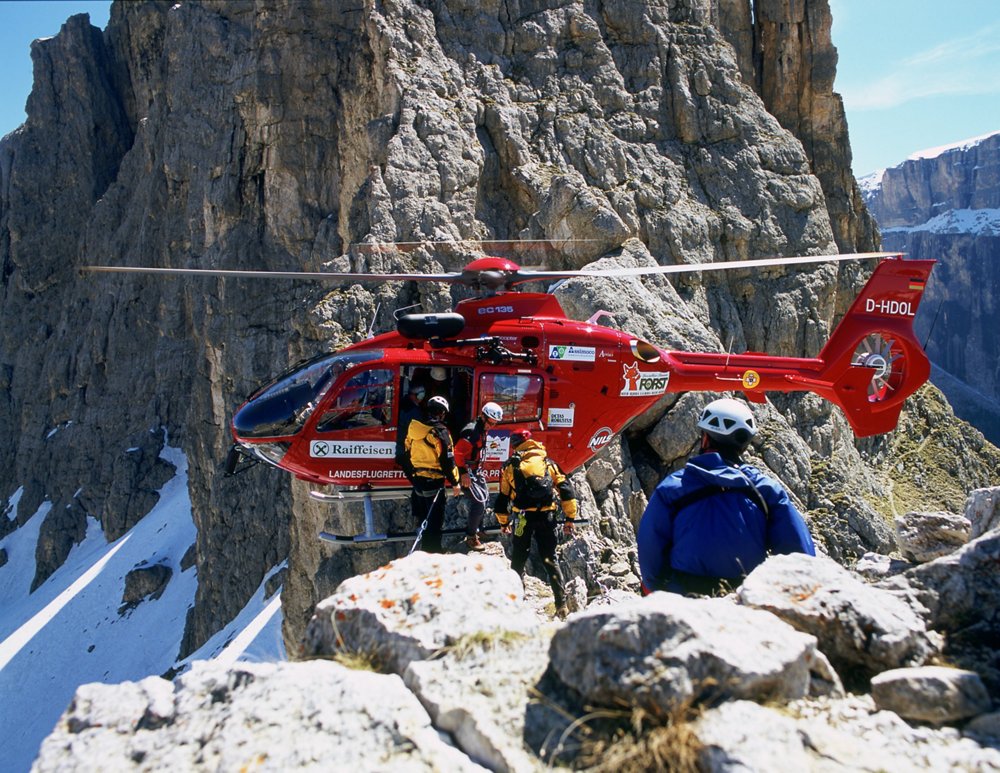
The H135 has excellent slope landing capabilities and can perform rapid search and rescue intervention in high-risk situations, such as in adverse weather and in the aftermath of natural disasters (floods, earthquakes, landslides and heavy snowfalls, etc.). The performance improvements of the latest H135 version further increase its hover performance, of particular importance in high-altitude mountain rescues.
Law enforcement
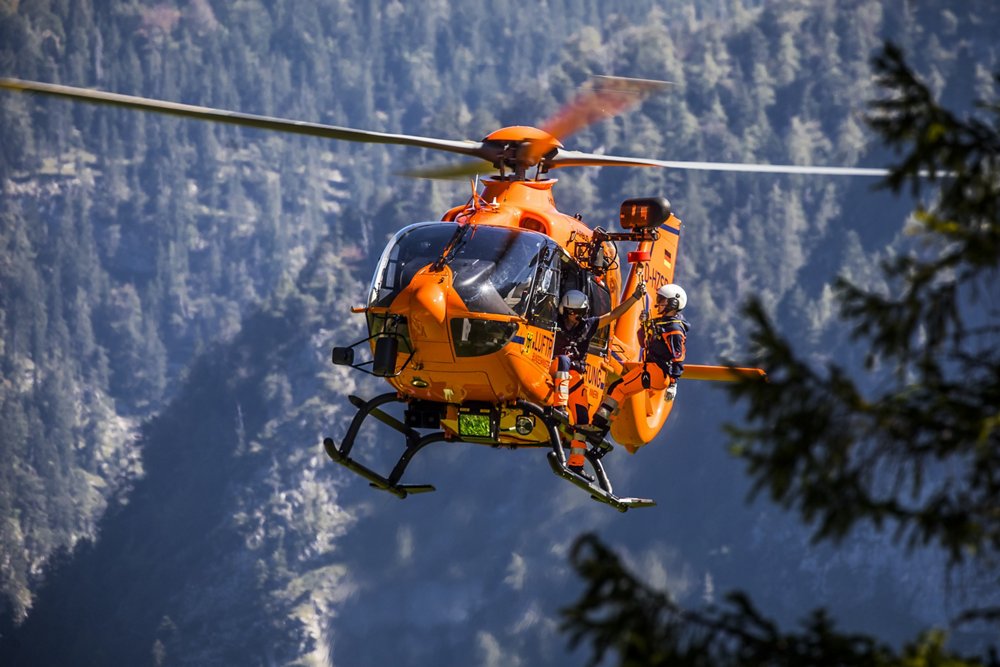
The H135 is the most successful light-twin aircraft in the law enforcement segment thanks to its high safety standards and good performance. The helicopter’s compact design lets it operate and land in hostile environments, as well as in densely populated urban areas. The low external sound signature makes the H135 a neighbourhood-friendly aircraft and also provides a tactical advantage. This is further enhanced by its law enforcement mission capabilities: the modern HD electro-optical system (EOS) allows police aircraft to operate from a tactically advantageous distance from the scene. The H135’s latest technology also fully integrates the aircraft in a unit’s tactical infrastructure by connecting the helicopter to the ground via different means (SAT-COM, GSM, G4, Tetra, digital downlink systems, etc.). The day-to-day work of law enforcement officers is further revolutionised thanks to state-of-the-art Wi-Fi connectivity, a tablet-compatible cockpit, and enhanced reality system (vector maps overlay on video images).
Energy
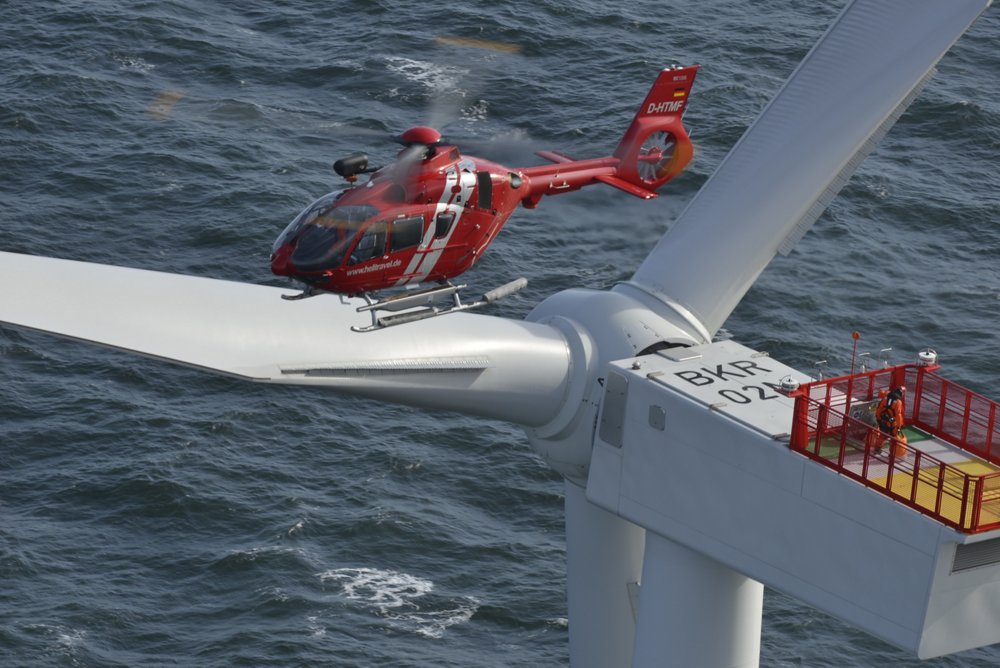
The rapidly growing environmental energy market is generating a new demand for smaller, more agile helicopters offering the highest safety standards while being extremely cost efficient. This is where the H135 fits in.
It is the first choice in the light twin class for human external cargo (HEC) operations requiring OEI performance. To this end, Airbus created unique flight manual supplements for the H135 and the H145 to meet the need for the highest safety standards.
The H135 has become the reference light twin aircraft for offshore energy and power line maintenance missions, as well as for harbour piloting, missions which require a similar standard of safety and mission capability.
The H135’s external hoist system (HEC class-D certified) can be fitted either on the right- or left-hand side of the aircraft.
Offshore mission package
- Emergency floatation system (Sea State 6 certified)
- External life raft system (Sea State 6 certified)
- Helicopter emergency egress lighting (HEEL)
- Automatic deployable emergency locator transmitter (ADELT)
Private and business aviation
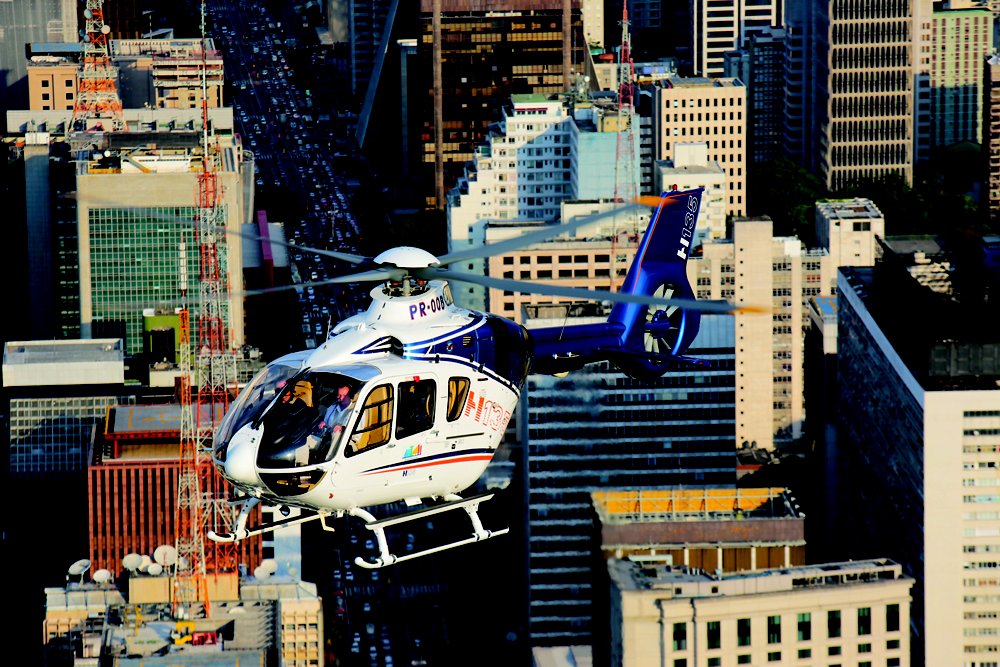
To differentiate its approach to private and business aviation, Airbus Helicopters has introduced Airbus Corporate Helicopters – ACH – its exclusive offer providing an end-to-end service-based ownership experience.
ACH provides an exclusive platform from which customers can experience best-in-class corporate and VIP transport solutions, tailored completion, and service. ACH ensures that only the highest quality materials and the best craftsmanship are on offer to customers.
The ACH range now features the ACH prefix: ACH125, ACH130, ACH135, ACH145, ACH160, and ACH175.
See the dedicated ACH website to find out more.Airbus Corporate Helicopters website
Technical Description
Configurations
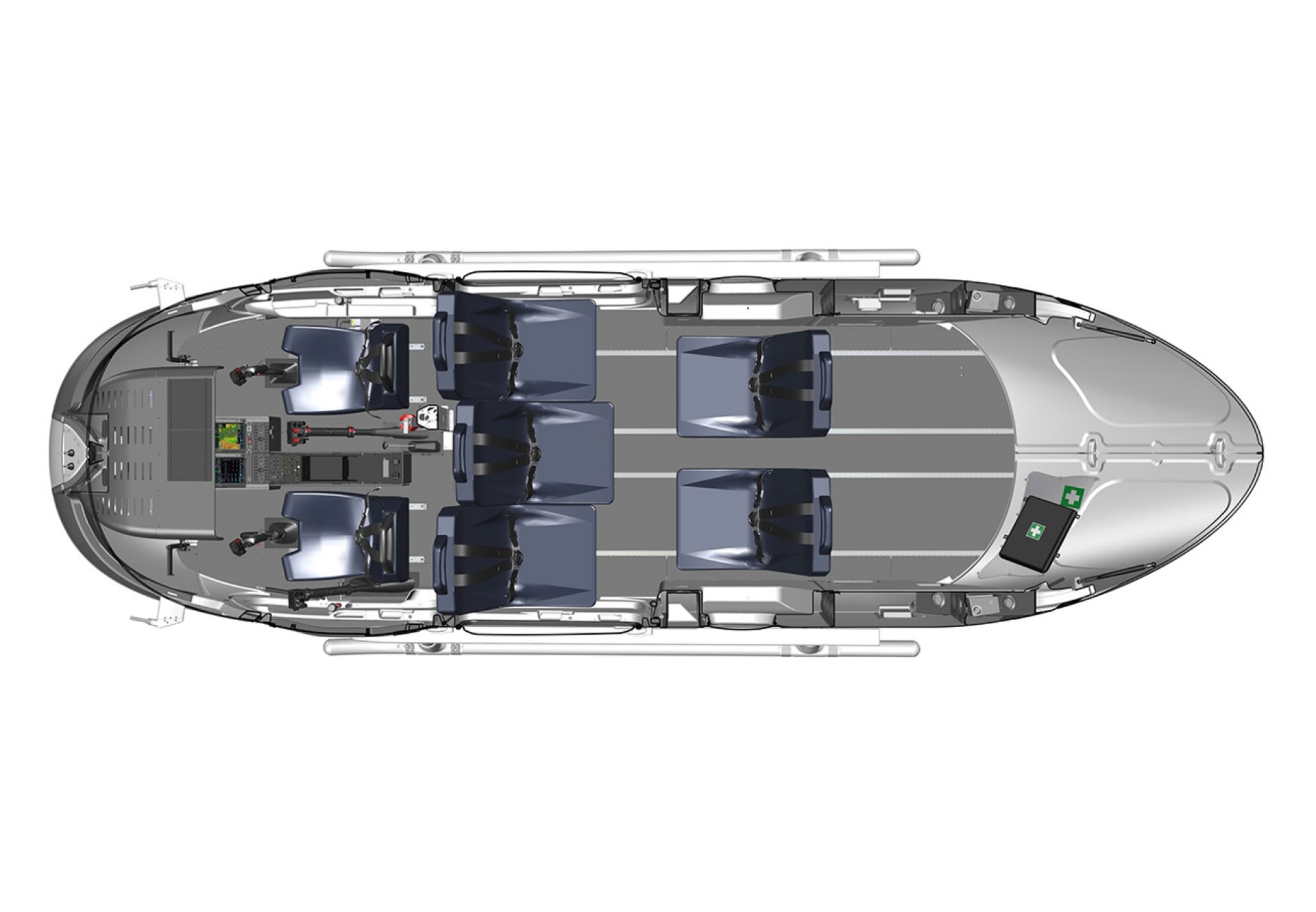
5 seats for passenger transport
The two pilot and five passenger configuration is suited to passenger transport operations. A combination of rear- and forward-facing seating create an environment conducive to conversation or work. HEMS Various configurations for helicopter emergency medical services are possible, depending on operators’ needs. A sample layout of two pilots, stretcher, and two medical attendants leaves sufficient space to administer care and easily load/unload the patient.
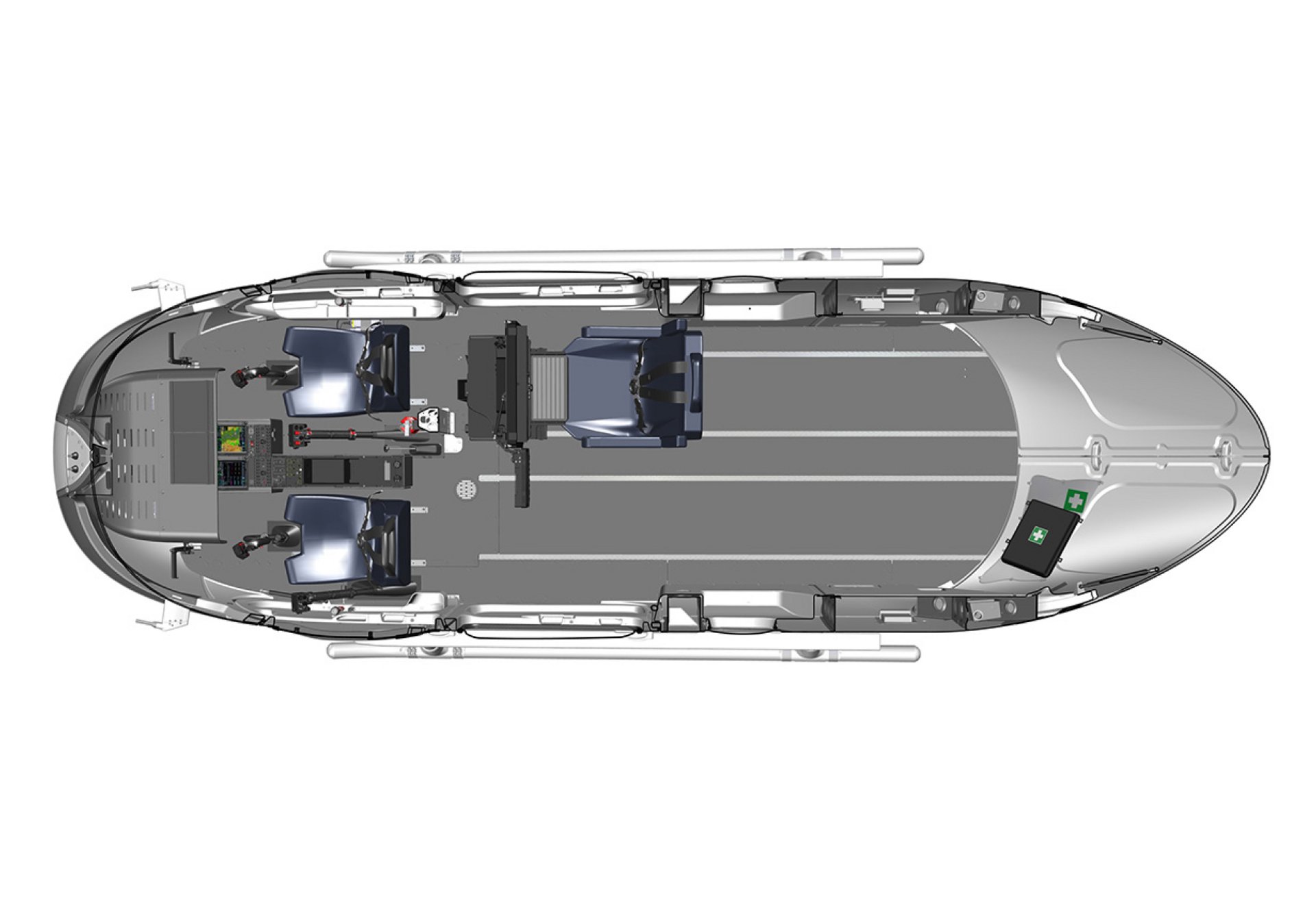
Police surveillance
Several configurations are possible for public service and surveillance operations. A typical layout of two pilots and an onboard operator at the console of an electro-optical system leaves cabin space free for cargo or additional equipment.
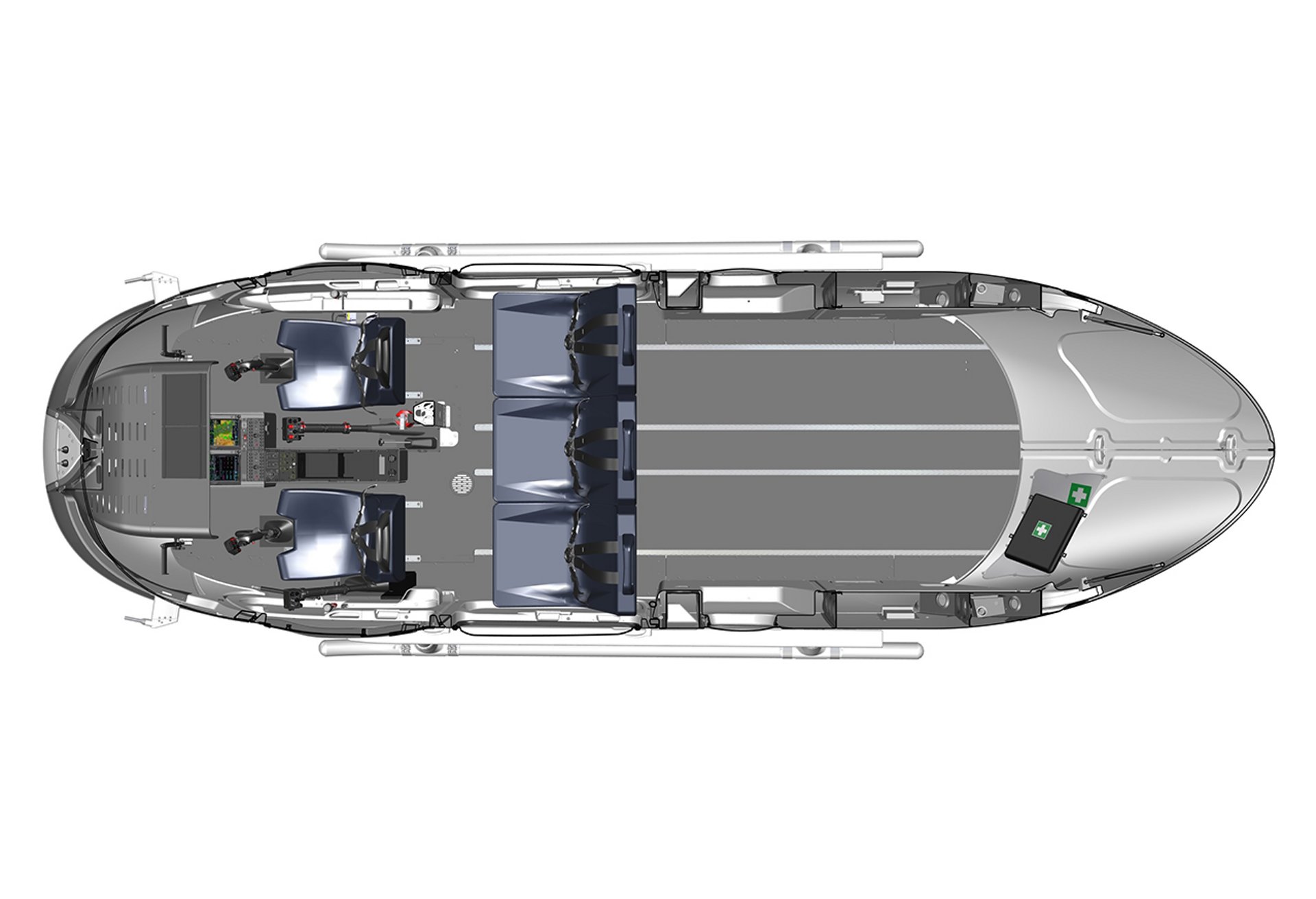
Training
The two-pilot and three-passenger layout of a sample training configuration lends itself to easy in-flight instruction. Three forward-facing seats just behind the pilots give students or observers an up-close view of the cockpit environment.

